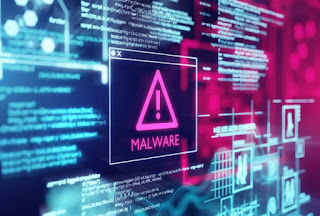How To Stop The Cyber Bully - Early Warning Signs, Trust, Openness And Guidance
Cyberbullying is an aggressive act. While some of us are more
aggressive than others, I believe we can calm cyber bullies by teaching them
how to stop being aggressive. It is possible
to learn anything. Psychology 101, Watson, and Skinner on Operant Condition are
all examples of this belief. There are
always two sides to every story, just as there are with everything else.
There is the victim who is cyberbullied, the virus technology being used by over 2 billion people (probably not all 2, billion but certainly the majority), as well as the parents of the victim. Instead of focusing on cyberbullying, confronting them and teaching them how to stop being aggressive, I will adopt a Broadcom Colombia passive approach and look at the issues and solutions from both the victim's perspective, his parents, and the technology.
Despite all that, bullying has moved to the Internet,
just like so many other things. The Internet and particularly the social networking
platforms like Facebook, Myspace, Google+ etc., are all a part of today's
world. Cyber bullies have another way to
abuse children.
These statistics show the severity of cyberbullying.
- Cyberbullying has been reported by more than 20% of
children aged 11-18 years who were randomly chosen to take part in a survey.
- Between 12 and 17, more than 93% of children use the
Internet. 70% of these kids use social media such as Facebook and Myspace. This online harassment is
spread virally by these social media technologies.
Approximately 71% of teenagers believe that blocking
abusive messages is the best way to stop bullying from the Internet.
Statistics show that nearly half of these incidents are
not reported. These
incidents are even more rare according to cyber bullying statistics.
The Cyber Bully Victim – Early Warning Signs
It is extremely important to be aware of early warning
signs, symptoms and reasons for cyber bullying as a parent.
As a calibration, let's define cyber bullying. It can be
described as any act on the Internet that humiliates, hurts or harms another
person. These
harmful acts can affect anyone of any age, but it's not necessary to stress how
important it is for your children to be safe from being bullied online. I'm
sure you've heard that "bullies often become bullies" and we don't
want our children to do the same. We want
to be able to solve it gracefully, calmly, passively if it happens.
It may not be obvious what the signs of cyber bullying
are at first glance. Parenting is hard work. It involves a lot of guesswork and
learning. Sometimes it feels like you have to have a sixth sense for your
child's personality. This is where you
might need to use your intuition to see the signs that your cyber bullied child
is trying to tell you. Remember that
bullying online isn't that different than bullying in person. The Internet is just another way for bullies to communicate
their message. It is similar to the way
you would handle bullying in the offline world.
When something isn't quite right with your child, you can
trust your intuition. You might notice your child is using the internet or
computers all day. This may seem fine for
a day. If that behavior continues for more
than a few days, you might be concerned. If
you're like me, you'd think that it's strange. That's what I call parent's
intuition - the 6th sense I discussed above. It is a part of every parent's intuition, and you should
listen to it. Your intuition will help you
recognize early warning signs. There are
other warning signs. We will examine the
warning signs of cyberbullying, their technology use and the actions you can
take.
What is Normal?
Normal is a relative term. Each child will have their
own norm. As a parent, you need to be able to recognize your children's
Internet habits. What is their Internet
usage? What do they do on the Internet? Are they using cell phones or other devices to connect to
the Internet? These questions can help you
to establish a norm for your children.
Remember that there are 13+ year-olds who use social
networking apps and are an increasing number. Their time spent on social
networking platforms has increased significantly over the years. Understanding your child's normal social networking behavior
will help you identify the'signs'.
You should suspect that your child is experiencing an
issue if they suddenly stop using the Internet. However, you should
recognize that the Internet can be accessed through other devices than
traditional ones like a PC, MAC or Desktop/Notebook. Although it may seem like your child is withdrawing, they
are actually connecting via another medium.
A cell phone can be used to connect the child to the
Internet. The number
of Internet-connected cell phones is steadily increasing and children are
enthusiastic users of cell phones to connect with the Internet. This is a benchmark you should understand to help your
child's Internet behavior. It's important
to realize that your child may be a victim of cyberbully via their cell phone.
Normal Signs
Cyberbullying can cause victims to withdraw from their
daily tasks. This is another indicator that a child could be an anxious target. Pre-teens and teenagers
can withdraw from their daily activities for no apparent reason. While withdrawals under normal circumstances are directed at
parents and their families, they will still be able to interact with their
peers as usual. Cyberbullying, on the
other side, can cause children to withdraw from their friends. Another sign that you are being targeted but also a way for
your child to get to know their normal baseline.
Bullies, online or offline, want to make others feel
superior and poke fun at them (often using very hurtful methods). These episodes can make a
child feel embarrassed or uncomfortable. They may have to confront their
friends, who may have seen the incident, or their parents, who may not be fully
understanding the situation. Because they
are afraid that the situation could get worse and it will continue, victims
don't speak out about bullying to their friends or family.
Public and private figures
Cyberbullies can make the problems and themselves seem
invisible. However, both can technically be tracked. Cyberbullies can create
the illusion of anonymity by being invisible. For example, the cyber bully could use private messages
boxes to carry out attacks that are hidden from others. Harassment can take the form of abusive messages, profane
language, or even threats. These private
attacks conceal the cyber bully from the general public and can leave the
victim scared, worried, or even lonely. A
child who has been subject to cyberbullying may experience extreme frustration,
anger or sadness. This is because these
threats are hidden from the public and difficult to identify.
Cyberbullying can be done in public, so the perpetrator
is visible. Cyber
bullying is a result of the nature technology. It allows people to spread the
word virally. The impact and issues can be
more serious than those of an 'invisible person'. The suicide of Phoebe Prince was an extreme case of
cyberbullying that got outof control.
Recognize the Call
Although most children aren't equipped to handle
harassment on their own, depending on their age, many will be able to
rationalize the situation to varying degrees. Some might say they are
capable of handling it. Some may retreat. While some may think they are capable of handling it, they
really need support. It is your job to
help them recognize the need for help.
Trusted Help
Your child has just moved beyond their normal behavior
and is now retreating. Your intuition says that you should have a guided
conversation with your child. You will
hopefully have a trusting, open relationship by that point. Trust is key, especially when it concerns your children's
ability to rely on you. Remember that your
child has likely used your assistance in the past to solve difficult
situations. Why should this situation be
any different? Cyberbullying can be solved
by trust.
Listening is an important part of understanding the
situation. However, it's equally important to direct the conversation in the
direction you need. To solve the problem you must get to the root cause. To properly understand the
situation, you will likely need to dig and mine information.
Access to your child's cell phone and Facebook account
will be necessary in order to solve the problem. Ask your child to assist
you. Reassurance is key. Although your child may not be ready to share everything
with you, reassurance can go a long ways in calming them down. Your child should feel safe and secure. Let them know you
are there to help.
You can see that Parenting 101 is the answer. There is one difference
between now and before: Before you used your parenting skills face-to face with
people. This time, however, you are using them online. It's time to transfer your parenting skills to the internet.




Comments
Post a Comment